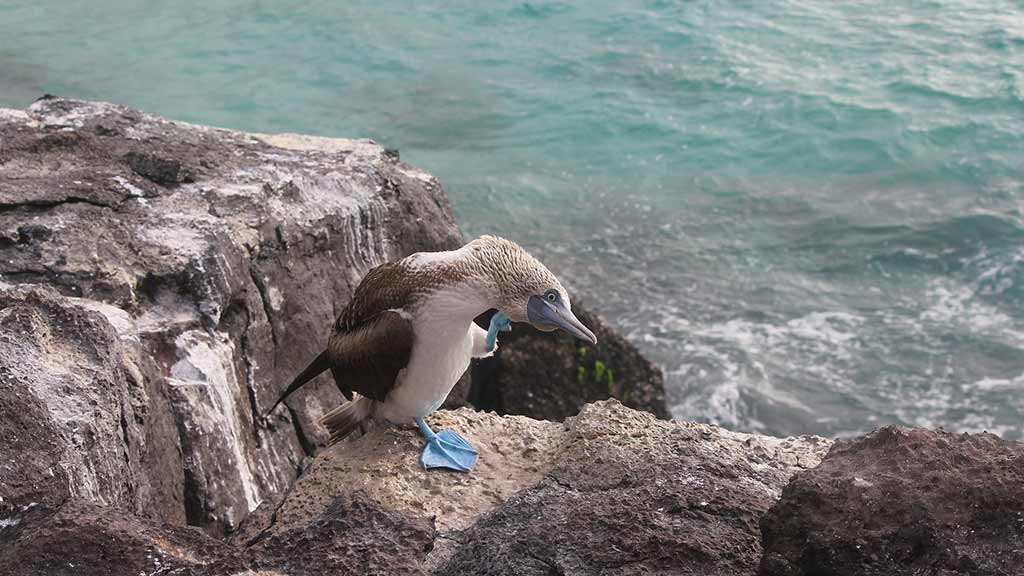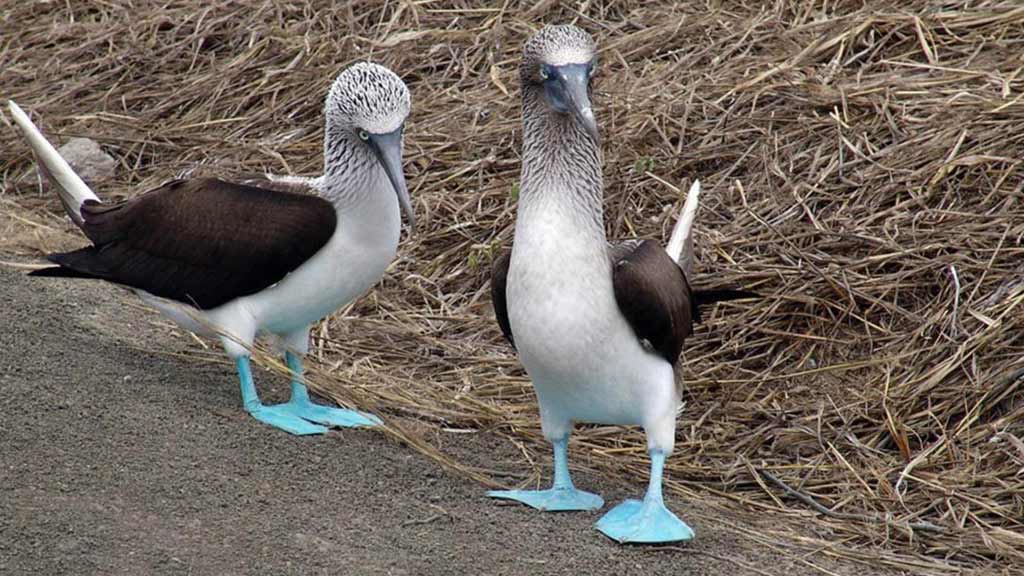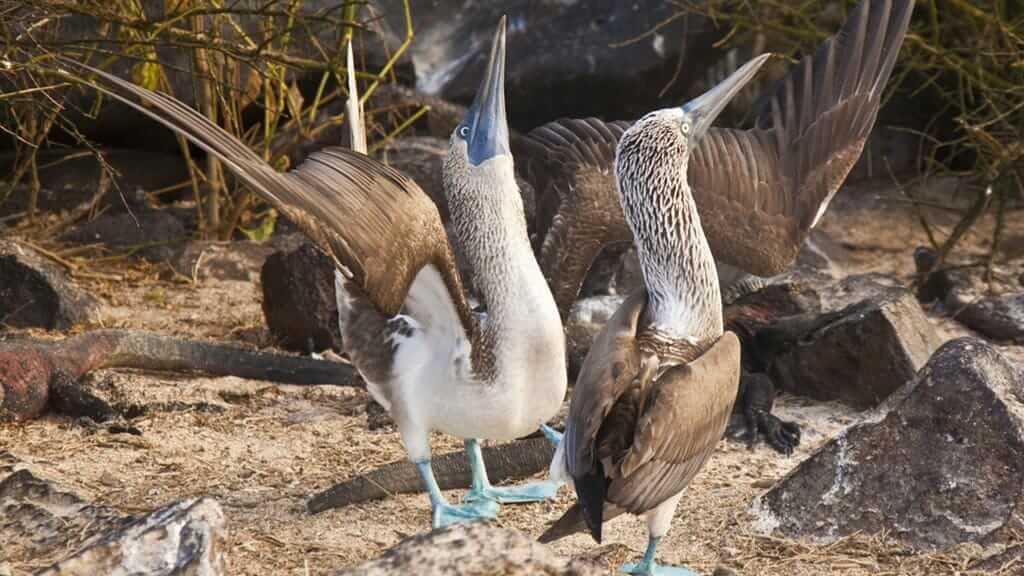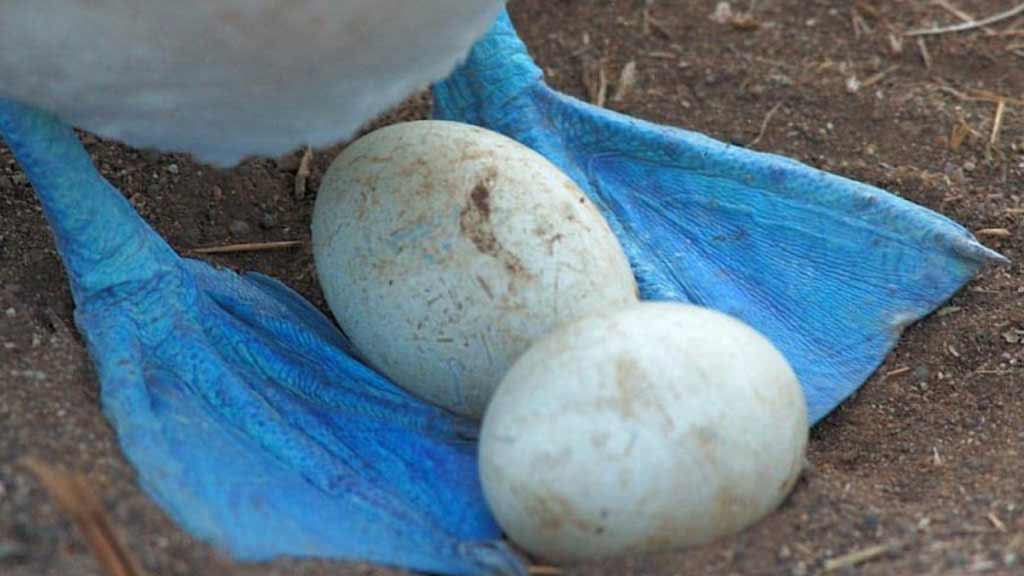GALAPAGOS BLUE FOOTED BOOBY
The Galapagos Blue Footed booby is the undisputed comedian and clown of the islands. These amazing seabirds amuse and entertain visitors with their funny antics and those famous blue feet. At Galapagos, the Blue footed booby seems to be everywhere. You’ll see groups of boobies flying, dive-bombing, or hanging out on rocks. With careful trip planning visitors can even head to a blue footed booby colony where thousands nest and interact together. Here, with luck, you might observe the greatest spectacle of all – the remarkable blue footed booby dance!
Read on for everything you ever wanted to know about the Galapagos blue footed booby. Where and when to see them? How to recognise them? Lots of fun blue-footed booby facts and information. Plus, learn why boobies have those amazing blue feet!
SECURE YOUR GALAPAGOS TRAVEL
Get a FREE personalised quote todayConservation Status: Endangered
Scientific Name: Sula Nebouxii
How to see a Blue Footed Booby at Galapagos?
It is easy to spot blue-footed booby birds during either a Galapagos cruise or island hopping land trip. In fact rarely a day will go by at the islands when you won’t spot one.
Where to find Galapagos blue footed boobies?
Blue footed boobies are common right throughout the Galapagos archipelago. The largest colonies are found on North Seymour & Española islands. At these sites, visitors can get up close to the action as trails run right past booby nests, giving a wonderful opportunity to appreciate these fascinating birds from chick, to fledgling, to juvenile, to adult. Other good visitor sites to find them include Punta Pitt (San Cristobal), Plaza Sur, Santa Fe, the north coast of Santa Cruz, Rabida island and to the north of Floreana.When to see them?
Blue-footed boobies can be found all year round at the Galapagos islands. Their mating season usually runs from June to August, which can be the best time to see the famous blue footed booby dance. Chicks hatch from July onwards. Booby mating seasons may vary from island to island, or based on local abundance of food sources.
Contact us for a FREE GALAPAGOS TOUR QUOTE or for more information to plan your Galapagos Islands vacation.
GET FREE ADVICE
From a Galapagos destination expert todayEverything you need to know about the Blue-Footed Booby
How to recognise a Blue-footed booby bird?
Identification of Blue Footed Boobies is never a problem, thanks to those unmistakable bright blue feet. Younger boobies tend to have brighter colored feet than mature adults. Other distinctive features of a blue-footed booby include a white belly, dark brown wings and streaky white/light brown neck and head. Their bills are sharp and pointed, with eyes either side at the top of the beak for great binocular vision.
Blue footed booby size is on average 81-90 cm tall, weighing 1.5 kg. Their wingspan measures an impressive 1.5 meters from tip to tip.
There are various ways to tell male and female blue footed boobies apart. Firstly, females are slightly the larger of the sexes. Secondly, females have large pupils, and males small ones.
Galapagos Blue footed booby habitat
Where do blue footed booby birds live? Their range extends across eastern pacific ocean islands, from california down to peru. 50% of blue footed booby breeding pairs can be found at the Galapagos islands.
Preferred blue footed booby habitat is on small islands with rocky coasts and cliffs for nesting.
What is the famous blue footed booby dance?
During breeding season the Blue Footed Booby dance is a wonderful spectactle to behold. This can be a top vacation highlight for many visitors, so get your video cameras ready! The blue footed booby mating dance ritual begins with the male booby presenting the gift of a stick or stone to the female. He will them clumsily strut with head in the air (known as sky pointing) while making a high-pitched whistle sound. The booby dance climaxes with high stepping to show off those brightly-colored feet.
The female meanwhile is a spectator, remaining at the edge of the dance floor to gain a first impression of her suitor. If she likes what she sees then the female will accept the male’s advances by goose-stepping and flapping her wings back. Finally the blue footed booby couple will dance together.
For tourists this dance is rather amusing, but for a female booby there is important significance to each step. She is evaluating her potential mate, to decide whether he will make a suitable parent for her offspring. Are his wings those of an impressive fisherman? Does he have healthy deep blue feet? Is the location of his nest a suitable site to bring up her young? It’s not just about his fancy dance moves!
Blue-footed booby behavior
The blue footed booby breeding cycle runs every 8 or 9 months at Galapagos, usually during the cool/dry season when food in most plentiful. If the flirtation of the blue footed booby dance was successful then the couple are ready to prepare a nest together.
Where do blue-footed boobies lay their eggs? Nests are a very simple affair, often just a small pile of stones and twigs on the ground, and a barricade of guano to mark their territory. They lay 2 to 3 eggs per clutch, with each egg deposited 4 or 5 days apart. This is followed by an incubation period of around 1 and 1/2 months, where parents protect their eggs and keep them warm using their large webbed feet. Typically only 1 or 2 baby blue footed booby chicks hatch, which are ridiculously cute, white and fluffy little things. Both parents play a part in raising booby chicks, taking turns to guard the nest while the other hunts for food. In times of abundant food both chicks may survive, but in tougher times of scarcity only the first born might make it to adulthood.
Most Galapagos visitors are amazed at how tame blue footed boobies are – they often have no fear of humans. The up side to this is that you can get up close to blue footed booby nesting areas to observe their funny behavior. But do remember to keep at least 1 meter of distance and respect them – they are still wild birds, and your behavior might adversely impact their survival.
What does a blue footed booby eat?
The blue footed booby diet consists of oily fish. They hunt schools of sardine, mackerel, anchovy and flying fish. From May to December Galapagos seas are particularly rich in nutrients and fish, so boobies and other seabirds are very active at this time.
Blue footed boobies are extremely agile in the air, and effective when diving for food. They dive by folding their wings into their streamlined body, and descending like bullets at speeds of up to 60 mph. Boobies can hunt alone or in large hunting party flocks.
Fun Blue Footed Booby Facts
• How did the blue footed booby get its name? The name “Booby” comes from the spanish word “bobo”, meaning foolish or clown. This curious nickname originated due to their funny behavior on land when wooing a mate, and their often clumsy take-offs.
• What makes blue footed booby feet blue? Those famous blue feet are due to carotenoid pigments from their concentrated diet of sardines. Individual boobies who are effective hunters have bluer feet, which is a symbol of good bird health. This is a a very important trait when attracting a mate. Female boobies look for males with impressive blue feet, which in turn increases the chances that the very blue feet gene is passed down to their offspring.
• Blue footed boobies have permanently blocked nostrils for diving. They have therefore learnt to breathe through the corners of their beak.
• Galapagos blue footed booby numbers are declining. Back in the 1960s there was a recorded population of over 20,000 individuals, whereas today we find just 6,000. The main threat to blue footed boobies is overfishing. A reduction in sardine numbers affects blue footed booby reproduction rates. The Galapagos Conservation Trust is currently funding a conservation project to better investigate the Galapagos booby population decline.
• For a truly unique Galapagos experience, why not buy a pair of Blue footed booby bird socks before you travel. They are quite the fashion item to have, and all proceeds go to the good cause of booby conservation.
If you enjoyed this post, why not check out their close cousins: Red Footed Boobies, Nazca Boobies or other Galapagos Birds.
The #1 Trusted
Galapagos Travel Agency
Blue footed boobies have character and charisma in spades, and not surpisingly adorn popular T-shirts and souvenirs in Galapagos gift shops. It’s always fascinating to witness people’s first reaction on seeing these crazy birds – it’s usually a combination of awe and laughter, especially when performing their famous booby mating dance. The Galapagos Blue Footed booby is one of the top wildlife highlights for many visitors, so come check them out for yourself!








